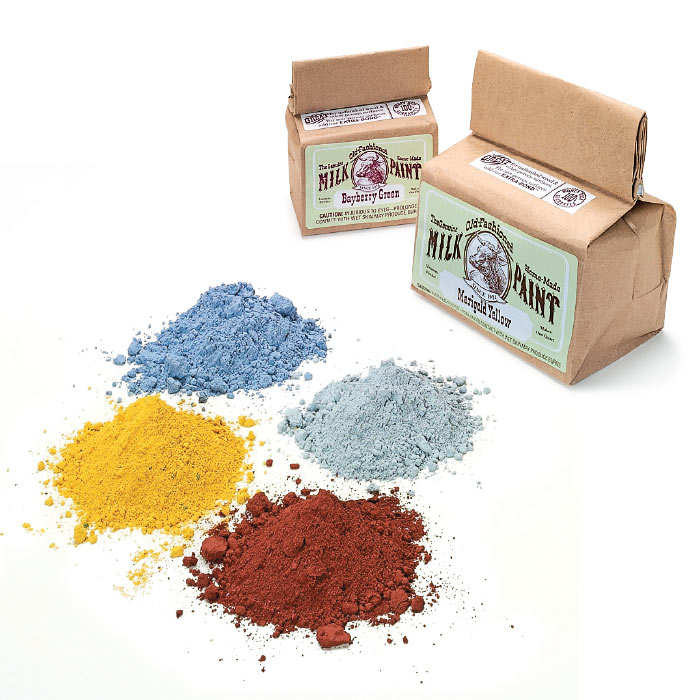
When you want an eco-friendly finish that looks great, give milk paint a try. This paint, which is made from all-organic raw materials such as powdered milk protein and clay, continues to find new fans. Milk paint adheres best to porous surfaces (such as raw wood or drywall), but additives are available to help it adhere to most non-porous surfaces.
Organic Advantage. Milk paint won’t bother people who are allergic to modern paints, and it’s even safe for children’s toys and furniture. The colorfast, durable paint is available in an array of colors through online retailers. It’s easy to get started – continue through the slides to learn how!
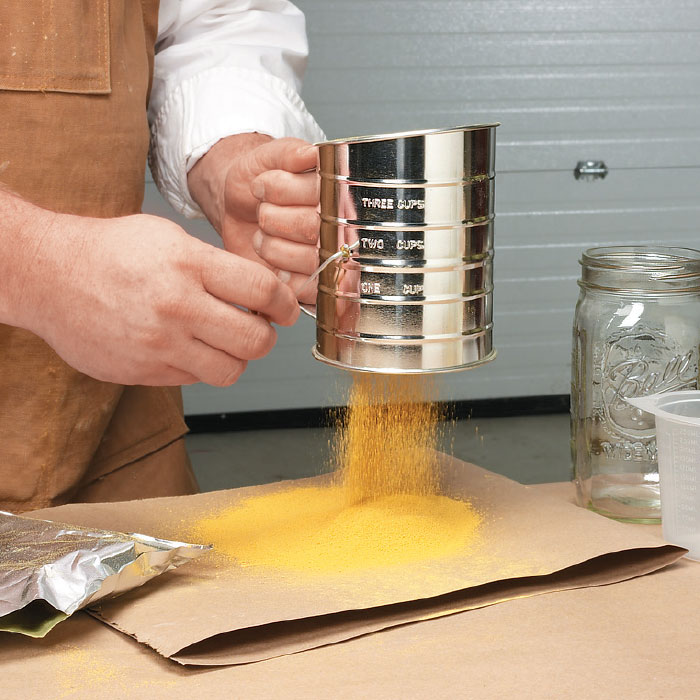
A one-pint package of milk paint contains about 1½ cups of powder and, when mixed with 1½ cups of water, will make about one pint of paint. Achieving a smooth texture can sometimes be a challenge when using milk paint, so use a flour sifter to remove any lumps from the milk paint powder.
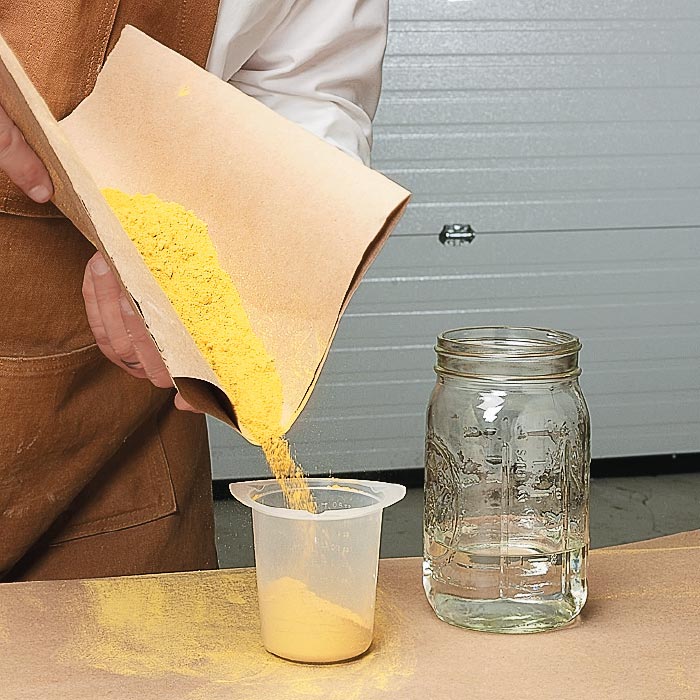
After ensuring that the milk paint powder has been sifted, you’re ready to add it to the container. We sifted the powder right onto a piece of paper, and used that to transfer the powder into the container.
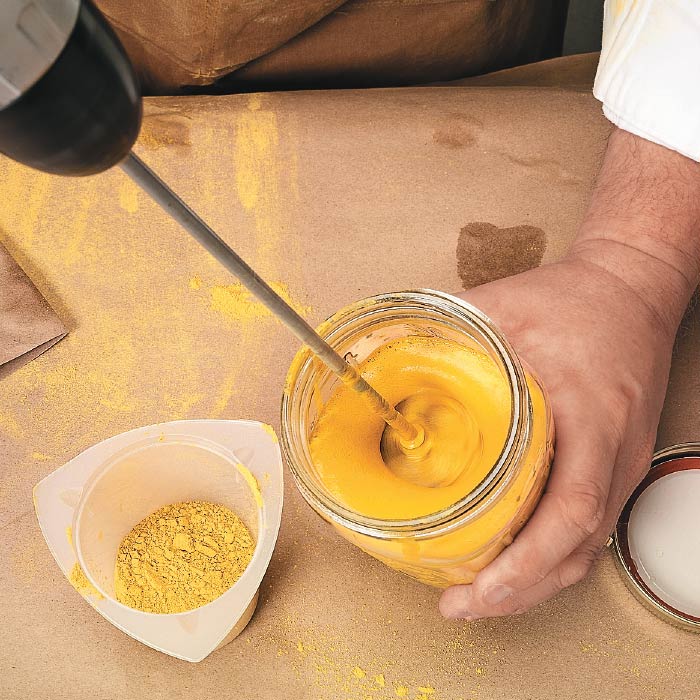
To make a bigger batch of milk paint, measure the powder and water and then mix them using a wire paint paddle on a drill. Be sure to use the lowest speed, since higher speeds can create foam. Mix thoroughly for two to three minutes. If you still have small lumps, you can use a piece of cheesecloth or a nylon stocking to strain the mixture. Allow the mixture to stand for 10 to 15 minutes so the paint particles will completely disperse.
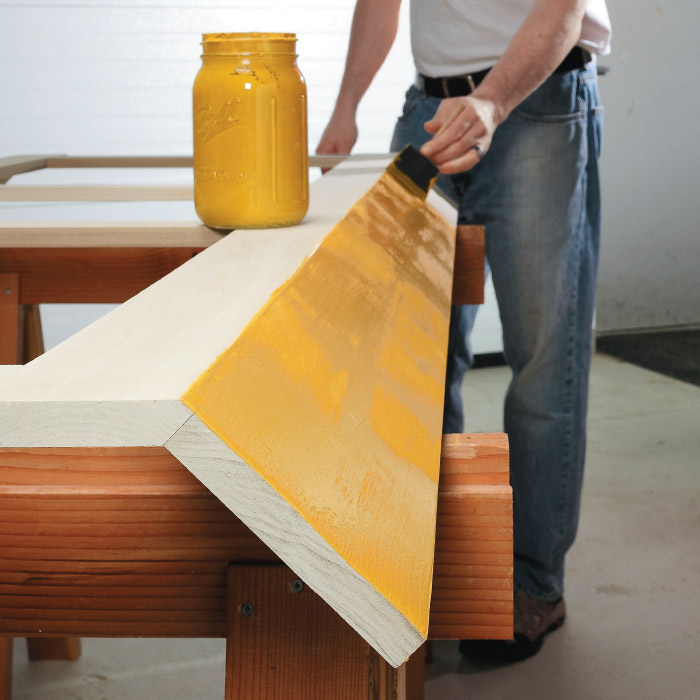
Milk paint makes a great finish for classically styled furniture pieces. The bright pop of color, combined with the smooth, flat painted finish, will help any piece stand out in the space.